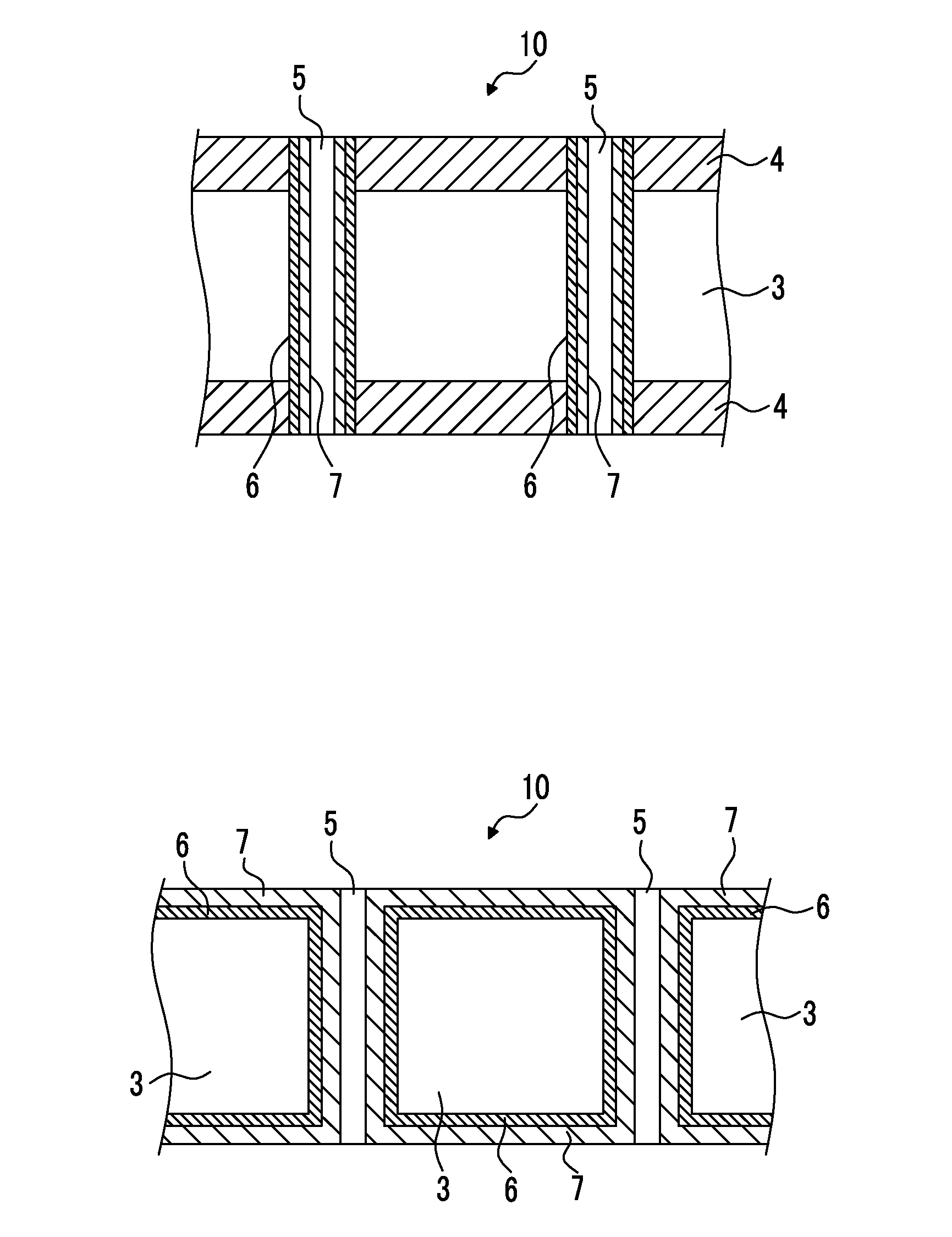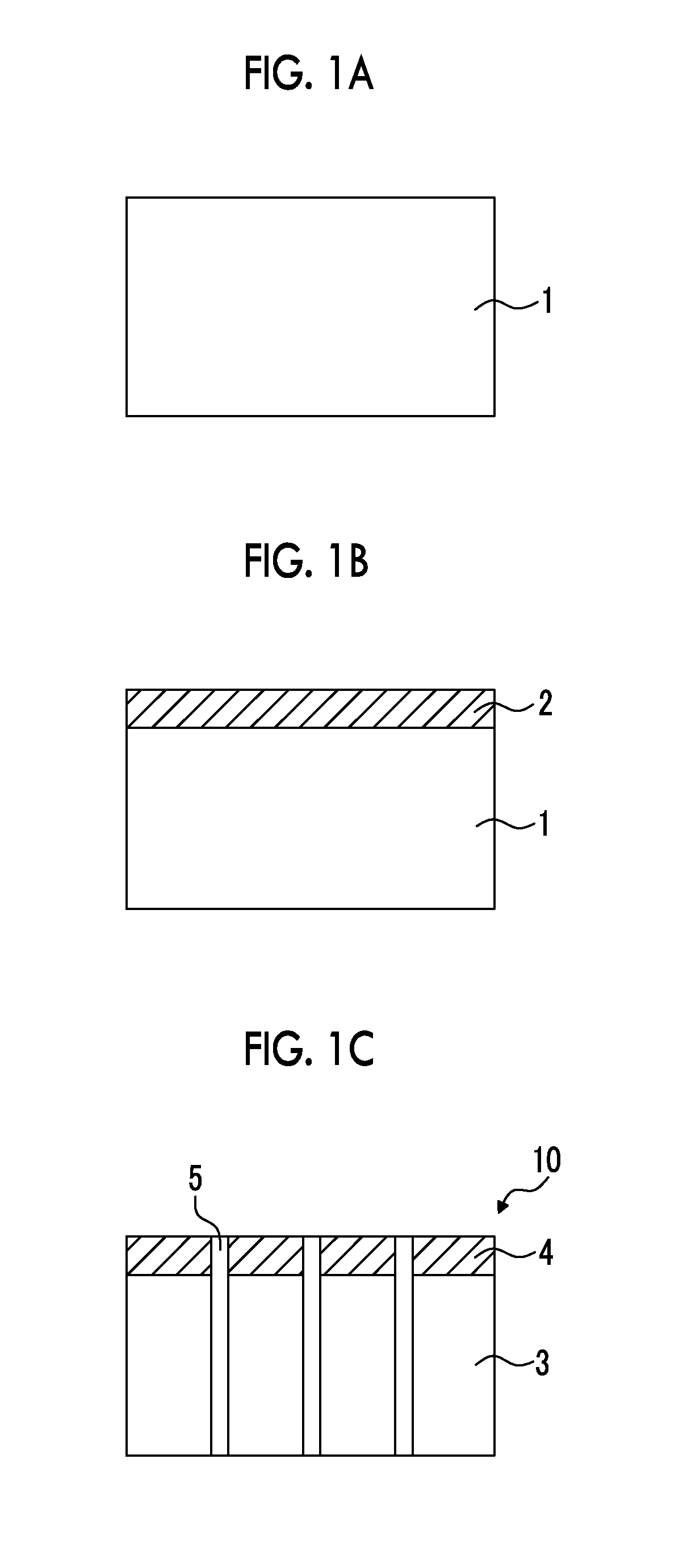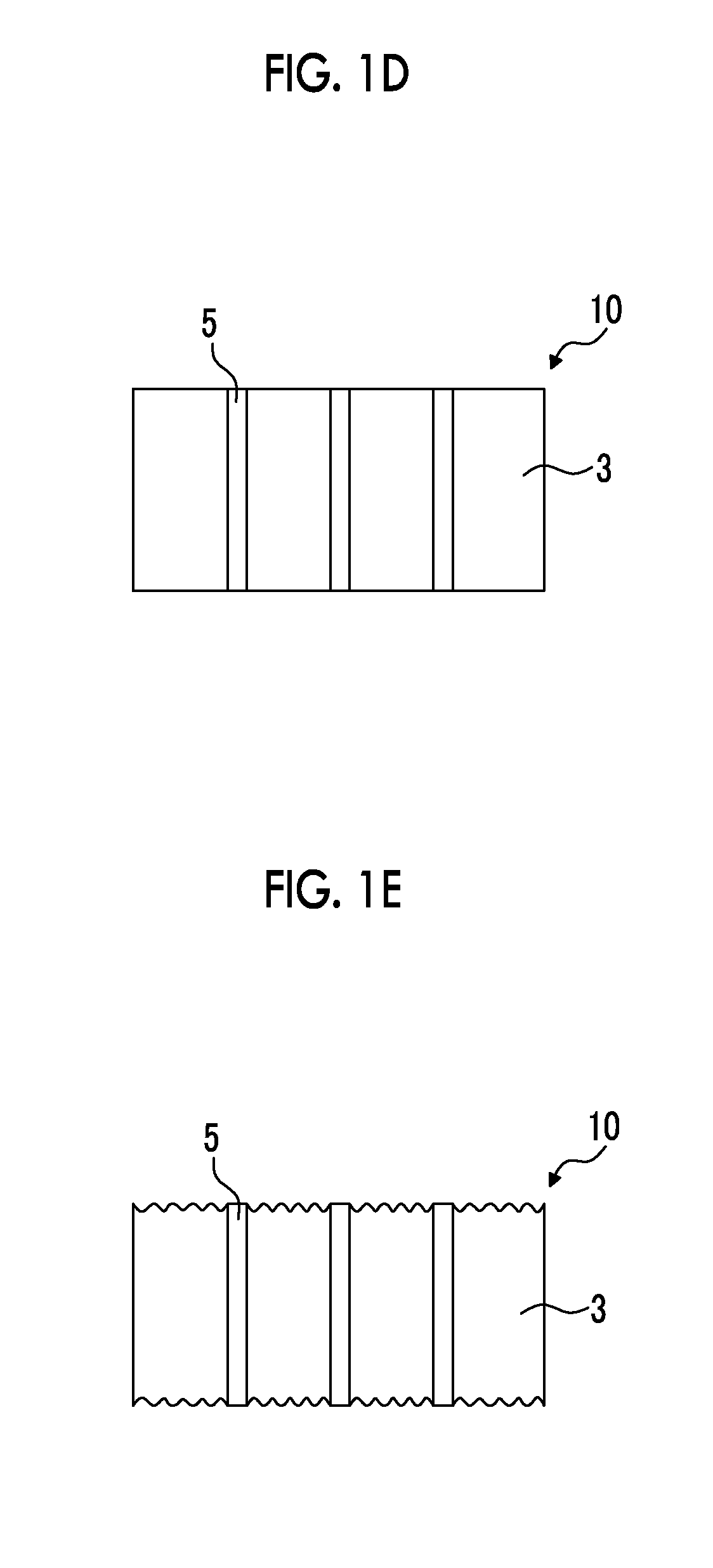Method for manufacturing aluminum plate, aluminum plate, collector for storage device, and storage device
- Summary
- Abstract
- Description
- Claims
- Application Information
AI Technical Summary
Benefits of technology
Problems solved by technology
Method used
Image
Examples
example 1
Production of Aluminum Substrate for Collector
[0221]A treatment which will be described below was carried out on the surface of an aluminum substrate having a thickness of 5 m and a width of 200 mm (JIS H-4160, alloy number: 1N30-H, aluminum purity: 99.30%), thereby producing an aluminum substrate for a collector.
[0222](a1) Oxidized Film-Forming Treatment (Oxidized Film-Forming Step)
[0223]Direct-current voltage of 15 V was applied to the aluminum substrate for 16 seconds at a direct current density of 25 A / dm2 under a condition of 52° C. using a solution having an aluminum concentration of 5% or lower and the aluminum substrate as an anode at a sulfuric acid concentration of 170 g / L, thereby forming an oxidized film (the amount of the coating: 2.4 g / m2) on a single-side surface (single surface) of the aluminum substrate. After that, water washing was carried out by means of spraying.
[0224](b1) Electrolytic Dissolution Treatment (Through Hole-Forming Step)
[0225]Next, an electrolytic ...
examples 2 to 14
[0230]Aluminum plates were produced using the same method as in Example 1 except for the fact that the thicknesses (t) of the aluminum substrates and the quantities of electricity (Q) in the electrolytic dissolution treatment were changed to values shown in Table 2 below, and, in Example 5, an electrolytic roughening treatment described in (d1) below was carried out after the removal treatment of oxidized films described in (c1).
[0231](d1) Electrolytic Roughening Treatment
[0232]Next, an electrochemical roughening treatment was continuously carried out on the aluminum substrate that had been subjected to the removal treatment of oxidized films using 60 Hz alternating-current voltage. At this time, the electrolytic solution was an aqueous solution of 10 g / L of nitric acid (including 4.5 g / L of aluminum ions), and the temperature was 50° C. The alternating-current power source waveform was the waveform illustrated in FIG. 4, and the electrochemical roughening treatment was carried out ...
example 15
[0233]An aluminum plate was produced using the same method as in Example 1 except for the fact that a removal treatment of oxidized films described in (c2) below was carried out instead of the removal treatment of oxidized films described in (c1).
[0234](c2) Removal Treatment of Oxidized Films (Oxidized Film-Removing Step)
[0235]Next, the aluminum substrate that had been subjected to the electrolytic dissolution treatment was immersed in a sulfuric acid aqueous solution (sulfuric acid concentration: 300 g / L, liquid temperature: 60° C.) for 120 seconds, thereby dissolving and removing the oxidized film.
[0236]After that, the aluminum substrate was washed with water by means of spraying and was dried, thereby producing an aluminum plate having through holes. Meanwhile, in Table 2 below, the removal treatment of oxidized films under this condition is denoted as “acid”.
PUM
| Property | Measurement | Unit |
|---|---|---|
| Length | aaaaa | aaaaa |
| Length | aaaaa | aaaaa |
| Length | aaaaa | aaaaa |
Abstract
Description
Claims
Application Information
 Login to View More
Login to View More - R&D
- Intellectual Property
- Life Sciences
- Materials
- Tech Scout
- Unparalleled Data Quality
- Higher Quality Content
- 60% Fewer Hallucinations
Browse by: Latest US Patents, China's latest patents, Technical Efficacy Thesaurus, Application Domain, Technology Topic, Popular Technical Reports.
© 2025 PatSnap. All rights reserved.Legal|Privacy policy|Modern Slavery Act Transparency Statement|Sitemap|About US| Contact US: help@patsnap.com



